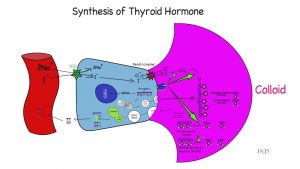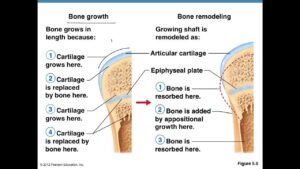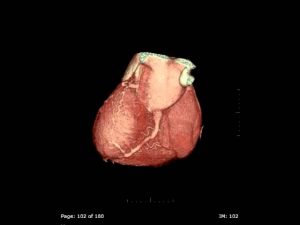In this video I discuss what is metabolic rate, how to calculate metabolic rate, and how to calculate calories burned, and how many calories burned in a day. I also discuss basal metabolic rate, and resting metabolic rate. Transcript (partial with notes) In this video, I am going to show you the formula on how to calculate your calories burned in a day (metabolic rate). And give some examples. Lets start off with the term metabolic rate. In this video we are defining metabolic rate as the amount of calories you would burn off in a day (24 hours) while at rest. So, not moving around or being active. In the fitness community, There are 2 popular formulas to calculate this. BMR, basal metabolic rate, and RMR, resting metabolic rate. BMR is taken after 8 hours of sleep and 12 hours of fasting. RMR is taken under less restrictions, and has been shown to be statistically more accurate. Lets look at a couple of examples. Here we have kyle and Samantha, and their metrics are here. Kyle is 44 yrs old, is 5’8” tall, and weighs 160 pounds. Samantha is 33 yrs old, 5’4” tall, and weighs 126 pounds. The RMR equation for men is (4.55 x Weight in pounds) + (15.88 x Height in inches) – (5*age) + 5, for women the equation is (4.55 x Weight in pounds) + (15.88 x Height in inches) – (5*age) -161. When we plug in Kyle’s and Sam’s #’s, we see that Kyle’s RMR is 1592.84 cal/day, and Sam’s is 1263.62 cal/day. So, after rounding up, this tells us that if Kyle and Sam were to sit around all day, they would need 1583 and 1264 calories per day to maintain their weights. We know that neither Kyle or Samantha are going to sit around all day. So there is a multiplication factor that we must use next. It is based on each of their lifestyles. The factor is as follows… • 1.200 = sedentary (little or no exercise) • 1.375 = lightly active (light exercise/sports 1-3 days/week, approx. 590 Cal/day) • 1.550 = moderately active (moderate exercise/sports 3-5 days/week, approx. 870 Cal/day) • 1.725 = very active (hard exercise/sports 6-7 days a week, approx. 1150 Cal/day) • 1.900 = extra active (very hard exercise/sports and physical job, approx. 1580 Cal/day) Lets say Kyle is very sedentary, so if we multiply his RMR by 1.2 we have ….1911.6 cal/day. Now, Samantha is in the very active category, so we need to multiply her RMR by 1.725, and we get…2180.4 cal/day . So, based on these calculations Kyle can consume 1912… calories per day to maintain his current weight, and Samantha can consume …2180 calories per day to maintain her weight. Now, You can use the RMR equation and lifestyle multiplication factor to calculate your baseline. Drawbacks… A few of things I need to mention. First, this and any other formula used to calculate your metabolic rate is just an estimate. There is a margin for error. Second, muscle mass is very important. Lets look at Kyle, and Jack, who both weigh the same. However, Jack has much more muscle mass than K, since muscle burns more calories than fat, J will have a higher metabolic rate. Third, the type of diet ( for example consuming whole vs processed foods) is not factored either. Bottom Line I don’t believe that counting calories is a path to successfully sustaining weight loss in the long run. However, Using the RMR formula and the lifestyle multiplication factor is extremely helpful in increasing your awareness to how many calories you need to consume per day. Which In turn can lead to a higher awareness of how quickly calories you consume add up. Other sources… http://www.scientificpsychic.com/health/cron1.html http://www.ncbi.nlm.nih.gov/pubmed/15883556

Metabolic Rate – What Is Metabolic Rate – Basal Metabolic Rate – How Many Calories Burned In A Day
- Post author:
- Post published:May 17, 2021
- Post category:Uncategorized
- Post comments:0 Comments
You Might Also Like

Types of Steroids

Arnold Schwarzenegger ”Bodybuilders Today Are Not Accepted. They’re Too Big With No Talent” HD

INSANE BICEPS: Preacher Curls at Home!

Metabolism, Anabolism, Catabolism – FITNESS VIEW | How to calculate your BMR | by Abhinav Tonk

Key Muscle Nutrition For Building Muscle: Dr.Berg on Muscle Growth

Barbell Bench Press-6

Bench Dips for Big Triceps, How to Get Big Triceps

Quick review of thyroid hormone synthesis.

Phil Heath’s Dumbbell Row | Back Exercise #2

Semen Analysis – What is the normal sperm count? | Metromale Clinic & Fertility Center

Anaerobic – Medical Definition

Neuro Surgery Video – 1

Muscle Building Workout & Squats Video – 20

Hot Stone Therapy Video – 3

hormone replacement therapy – How to Increase Estrogen Healthy Life Styles

Muscle Building Workout & Squats Video -49

High protein diet plan for weight loss How does it works

Azoospermia treatments.PESA Percutaneous EpididymalSpermAspiration in chennai,India.Male Infertility

Top 5 Arnold Schwarzenegger Chest Exercises

Bone formation, healing, remodeling

How to Do a Lat Pulldown | Back Workout

Bodybuilding Video – 2

Reversing Type 2 Diabetes Naturally: 3 Inexpensive Foods You Should Know About

IS FAT HEALTHY?

DEXA DXA SCAN

Gastrointestinal Surgery Video – 2

How to Use the Back Extension Machine for the Obliques : Shaping Up

Physical Fitness Defined | The Definition of Physical Fitness

Shoulder Upright Row (Cable) – Standing/Rope

Tricep Dips

Lipids

Judo Video – 3

How to Do a Dumbbell Biceps Curl | Arm Workout

HGH, Growth Hormones & Plant Hormones Video – 49

What Is Alzheimer’s Disease?

Male Reproductive System – Hormonal Function and Regulation (sperm synthesis and maturation)
![Read more about the article [TRICKS] How to Memorize Hypertension Drug Suffix](https://videos.drmaheshkumar.com/wp-content/uploads/2021/05/TRICKS-How-to-Memorize-Hypertension-Drug-Suffix-300x225.jpg)
[TRICKS] How to Memorize Hypertension Drug Suffix

Hair Cycle / Skin Hair Cycle / Laser Hair Removal

Anabolic vs Catabolic Fitness States

Sports Physiotherapy Video – 4

The side-effects of vitamin and mineral suppliments tablets

